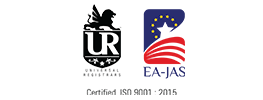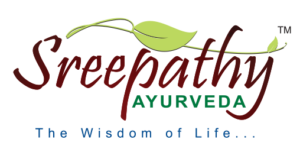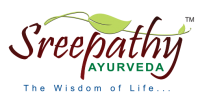AYURVEDA PHARMACY
An Ayurveda Pharmacy course teaches students how to prepare and dispense traditional Ayurvedic medicines. Students learn about herbs, minerals, pharmacology, and toxicology, and how to use various pharmacy tools. Graduates may work as Ayurvedic pharmacists or in research and development of new Ayurvedic products, or set up their own pharmacy.
Course Duration: 1 Year





Syllabus
1-SUBJECTS | |
1 | MoolaSiddhanta of Ayurveda (Basic principles of Ayurveda) |
2 | anatomy & physiology + Marma |
3 | Swasthavritta |
4 | Dravyaguna-1 |
5 | Roganidana and vikrithivinjana |
2- SUBJECTS | |
1 | Panchakarma |
2 | DravyaGuna 2 |
3 | BhaishajyaKalpanaand Rasasastra |
4 | Pharmacy Management |
5 | Communicative English |
AYURVEDA NURSING and COURSE – | |
1. MOOLA SIDDHANTA OF AYURVEDA: | |
DEFINITION: – Ayurveda, Four Goals of life, Origin of Ayurveda, The eight branches of Ayurveda, Pancha – Bhutatattva, Tridishas – Vata, Pitta and Kapha _ Qualities, Actions, Formation, Sthana (location) in the body, Based on day and night, And Age. | |
SAPTA DHATUS – The Sptadhatus, Rasa, Rakta, Mamsa, Medas, Asti,Majja, Sukra and Sronita – Their formation’ Functions. | |
TRI MALAS – Purisha, Mutra, Seda – Formation and Functions. | |
AGNIS – Saptadhatnagni, Panchabhutagni, Jataragni. | |
GUNAS – Mahagunas, Gurvdigunas, Shdrasa, Their effects on tridoshas, Virya, Vipaka and Prabhava, desa, baaisaja kala, classification of diseases based on body and mind, Pada – Chatustayam – Bhisak, Dravya, Upastha, and Rogi, Vegas (urges) – 13 types of Vegas – Dharaniya and Adharaniya Vegas, Classification of diseases according to prognosis, Nija and Agantojarogas, Classification of diseases – Seven types – Sahaja, Garbhaja, Jataja, Pidaja, Kalaja, Prabhavaja and Swabhavaja, Causes of diseases – Asatmendriyartasamyoga, Pragnaparada And parinamarogamarga – Bahya, Madhyama&Abhyantara, ama and Nirama, Signs & Symptoms of Ama, Classification of diseases based on Tridosas – 80 types of Vatajaroga, 40 types of pittajaroga, 20 types of Kaphajaroga, Ojys, Bhaishajya – Samshodhana&Samsamana, Bhaishajya kala. SROTAS. | |
2. ANATOMY & PHYSIOLOGY: A basic knowledge on various systems of the human body – Anatomy and physiology. | |
3. SWASTHA VRITTA (PUBLIC AND SOCIAL HYGEINE): | |
Padachattustayam, The Gunas of Bhishak, Dravya, Paricharaka, and Rogi, Dina chrya Brahma muhurtha, Passing of urges, Danta – Dhavanam, Anjanakarma, Nasya, Kavala, Gandusha,Dhumapana, Tamboolasevana, Abhyanga, Vyayama, Udvartana, Snana,Bhojana, Ratricharya, Ritucharya – Shadritu and ritucharya, Anna swarupa – Aknowledge of Kritanna – Manda, Peya, Vilepi, Odana, Three Upasthamsa – Ahara, Nidra, Brhamacharya, Janapadodwamsa (Epidemics), Saptaharakalpana – Swabhava, Samyoga, Samswkara, Matra Desha Kala, satmya, Bhojanavidhi, Anupana, Pathya – Apathya, Infections, Infestationa, Infectious diseases and Epidemics / pandemics, Hospital building and location knowledge on social hygiene – Air, Land water light < waste products toilets Industries schools occupational hazards Primary health care Family welfare programmes National progerames Mother and child welfare programme, WHO, Health administration, Health related statistics. | |
4. DRAVYA GUNA-1 1. DravyaGuna • DravyaLaxana, Panchabhoutikanishpatti, Aoushadhatwadravyapradhanyata. Definition of DravyaGunavignana and its importance. Brief Knowledge of Basic Concepts Of Dravya, Guna, Karma Rasa, ,Veerya, Vipaka, Prabhava&Paribhashas like Triphala, Trikatu, Laghupanchamula, Brihatpanchmula, Dashamula, Trinapanchamula, Valleepanchamula, Trijataka, Chaturjataka, Trikantaka, Panchapallava, Panchakola , Shadushana, chaturushana, jeevaneeyagana, Panchagavya, knowledge of Agrya-aushadha with examples and ChikitsopyogiAahaarVarga. 2. Pharmacognosy- Definition, Scope, Classification and Systematic study of Crude drugs. Identification, Collection, Storage and general knowledge about cultivation of some common herbs like Guggulu, Shatavari, Ashwagandha, Ghritakumari , Haritaki, Vibhitak, Amala etc. 3. Pharmacology- Introduction, Definition & scope of Pharmacology and Principles of general Pharmacology , Brief Knowledge of following – CNS depressants, Sedatives, Antipyretics, Analgesics Antiepileptic, Antihypertensive, Anticoagulant, Haemopoetic, Bronchodialators, Expectorants, Digestants, Antacids, , Laxatives, Diuretic, Antidiabetic, steroids, Contraceptives, Antibiotics. Route of Drug Administration, AoushadhaSuvan kala, Anupana- its importance, Posology. 4. Regulation of Drugs- An overview of Drugs & Cosmetic Act, 1940 and Drugs & Magic Remedies Act, 1945. New developments in the field of Drug Regulation (Ayurveda). | |
5.ROGA NIDANA AND VIKRITI VINJANA: | |
(A) Introduction – to rogavignana, Tridoshas, Saptadhatus, and trimalas, – their role in the causation of diseases, Signs & symptoms of Increase and decrease of doshas, Dhatus and Malas, The Kriyakalas, srotas – Importance of srotas in the production of diseases, Types of srtas, Types of diseaseas. | |
1 | Agantuja, sarira, ManasaSwabhavika. |
2 | On the basis of Adibalapravritta, Etc. |
3 | On basis of prakruta – Vaikruta. |
4 | On the basis ofAnubhandya – Anubhandha. |
5 | Numerable and innumerable nature of diseases. |
6 | Classification of diseases and it’s consensus with classification according to WHO. |
Immunity and Hypersensitivity – diseases and their types, Ashtanindita, Eight mahagada, Santarpanottah, apatarpanottah, Ojovyapada, Ojpvidramsa, benign tumors and malignancy. Ama and pakva avasthas, /sama – Nirama of doshas, Sama – Niama of dhatussama – nirama of malas, Uttana and Ghambira diseases, Dhatugatatva, Antarvegi – Bahirvegi, Jana – Padodwamsa, Importance of nidanapanchaka, Methodology for investigation of diseases (Clinical methods), The Hetus – Asatmy – Endriyarthasamyoga, Pragnaparada and parinamaprognsis – Chaya, Prakopa, Sthanasamsraya, Purva – Rupa, Rupa, VyaktiBhedasamprapti, Rogi – Pareekhavidhi – Trividhapareeksha, Ashtavidhapareesha | |
(B) A knowledge on the Cause, Signs & Symptoms and prognosis of various diseases mentioned in classical Ayurvedic texts Viz, Jwara, Rakta – Pitta, Kasa, Swasa, Hidma, Rajayakshma, Pramcha, Arsas, Grahani Shola, Vriddhi – Vidradhi, GraqnthiArbuda, SophaKushtoGulmaAtisaraVara – Vyadhi, Vatarakthaapasmara – Unmada, Etc. | |
5. BASICS OF DRAVYA GUNA:- 5. DravyaGuna • DravyaLaxana, Panchabhoutikanishpatti, Aoushadhatwadravyapradhanyata. Definition of DravyaGunavignana and its importance. Brief Knowledge of Basic Concepts Of Dravya, Guna, Karma Rasa, ,Veerya, Vipaka, Prabhava&Paribhashas like Triphala, Trikatu, Laghupanchamula, Brihatpanchmula, Dashamula, Trinapanchamula, Valleepanchamula, Trijataka, Chaturjataka, Trikantaka, Panchapallava, Panchakola , Shadushana, chaturushana, jeevaneeyagana, Panchagavya, knowledge of Agrya-aushadha with examples and ChikitsopyogiAahaarVarga. 6. Pharmacognosy- Definition, Scope, Classification and Systematic study of Crude drugs. Identification, Collection, Storage and general knowledge about cultivation of some common herbs like Guggulu, Shatavari, Ashwagandha, Ghritakumari , Haritaki, Vibhitak, Amala etc. 7. Pharmacology- Introduction, Definition & scope of Pharmacology and Principles of general Pharmacology , Brief Knowledge of following – CNS depressants, Sedatives, Antipyretics, Analgesics Antiepileptic, Antihypertensive, Anticoagulant, Haemopoetic, Bronchodialators, Expectorants, Digestants, Antacids, , Laxatives, Diuretic, Antidiabetic, steroids, Contraceptives, Antibiotics. Route of Drug Administration, AoushadhaSuvan kala, Anupana- its importance, Posology. 8. Regulation of Drugs- An overview of Drugs & Cosmetic Act, 1940 and Drugs & Magic Remedies Act, 1945. New developments in the field of Drug Regulation (Ayurveda). | |
| |
PART B | |
1.PANCHAKARMA Introduction to panchakarma, Classification of Chikitsa – Samso – Dana &Samsamana, Shadupakramas – Langhana, BrimhanaRukshanasnehanaswedana and sthambana, Classical AyurvediyaPanchakarma – Purva karma Pradhana karma paschat karma purva karma snehans&swedadapradhana karma – Classification according to Kayachikitsa&Shalya, Vamana. Virechanavasti&It’s types Nasya and its types Raktamokshana and its types. Keraleeyapanchakarma. | |
2.DRAVYAGUNA -2 1. Classification of Drugs according to Ayurvedic principles : a. On the Basis of BhoutikaSanghatana : ex PaarthivadiDravya etc. b. On the Basis of Yonibheda :Eg. Jangama (Animal product), Aoudbhida (Plant), Bhouma (Mineral product) c. On the basis of PrayogaBheda: like aoushadhidravya , Aharadravya, d. On the basis ofRasabheda: Madhuraskanda, Amlaskanda, katuskanda, Tiktaskanda, Kashayaskanda. e. On the basis of VipakaBheda : Madhuravipaka, Amlavipaka, katuvipaka f. On the Basis of VeeryaBheda : sheetaveerya and Ushnaveerya –etc g. On the Basis of Dosha Karma Bheda: Vata, pitta, Kapha shaman, &kopana&Swasthahita h. On the Basis of Karmatmaka: (Pharmacological classification) like- Jeevaneeya, Brumhaneeya, Lekhaneeya,Bhedaneeya, Deepaneeya, Shukrajanana etc. 2. Study of following drugs including Classification, Latin name, Family, Vernacular name, Synonyms, Botanical description, Varities. Habitat, Chemical composition, Properties, Doshakarm, Actions. Uses, Parts used : Dosage, Formulations, Substitute and Adulteration. 1. Aragvadha 2. Ardraka 3. Apaamarga 4. Arjuna 5. Ashwagandha 6. Arka 7. Aamalaki 8. Ashok 9. Balaa 10. Bilva 11. Bhringraj 12. Dhatura 13. Ela 14. Gokshur 15. Guduchi 16. Guggulu 17. Chandan 18. Chitrak 19. Haritakee 20. Haridra 21. Jyotishmati 22. Jamboo 23. Jataamansi 24. Kutaja 25. Khadira 26. Bhumyamalki 27. Nirgundi 28. Nimba 29. Marich 30. Madanphala 31. Pareesha 32. Punarnava 33. Pippali 11 34. Rohitak 35 .Rasona 36. Shirisha 37. Shatavari 38. Karanja 39. Kumari40 .Shalmali 41 Sudershan42 .Tulsi 43. Tvak 44 .Udumber 45. Vansh46 .Vacha 47. Vibhitaki48 .Lodhra 49. Vidang 50. Yashtimadhu 3. Brief knowledge of drugs of animal origin (Kasturi, Mrigashringa, Pravala, Bhunaga, Gandhamarjaraveerya, Shankha, Shambuka, Shukti, Indragopaetc). 4. Brief knowledge of Standardization of Singal Drugs. And the parameters for Standerdization (like – TLC, Ash value, etc) 5. Brief Knowledge of Purification of some poisonous drugs like Vatsanabha, Bhallataka, Bhanga, Ahiphena, Gunja, Kupeelu, Jayapala, Dhattura,etc | |
3 BHAISHAJYA KALPANA AND RASASASTRA. 1. Introduction to Bhaisajyakalpana , 2. Definition & Fundamental principles of BhaishajyaKalpana like Paribhasha, Mana, Panchavidhakashayakalpana, Anukta and visheshoktadravyagrahana, DravyasthritaRsas, guna, veerya, vipaka, prabhava etc. 3. Knowledge of Ancient Equipments like KhalwaYantra, Arkayantra, PatanaYantra etc. 4. Guidelines and method of collection, storage, preservation of Aushadhidravya. Rules for taking Shushka- Ardra and drava medicines. Grahyatava-agrahyatwa, Nava Puranadravyagrahananiyama 5. Classification of aushadi – Shodhana&Shamana, Bhaisajya kala – Kshanadi&Vyadhyavastha, 6. Desha – Classification, Clinical observations before administration of medicines 7. Bhaishajya kala – Classification of bhaishajya kala Pathya – Apathyaanupana benefits of Anupana, Various types of Ayurvedic formulations used in the treatment of diseases – Kwatha, Arista – Avaleha, Ghrita, Churna, Gutika, thaila, Etc. 1. Rasa sastra History, Classification, yantra, musha, chullika, puta, samskaras, shodhana, maran, bhavana, mardana, kinds of preparations ( bhasma, vati , bhasma etc..), • Definition of Rasashastra. Brief knowledge of Rasa, Maharasa, Uparasa, Saadharan rasa, Dhatu, Upadhatu etc. • Paribhasha& its importance , Shodhana, Marana, Bhavana, Avapa, Nirvapa, DhanvantariBhaga, Rudrabhagaetc • Brief description of yantras and their uses like Dolayantra, DamaruYantra, KhalwaYantra, TrividhaPatanaYantraVidyadharaYantra etc. • Brief description of putas and their uses like Gajaputa, Mahaputa, Laghuputa, Varahaputa, Kukkutaputa etc. • Brief description of musha like SamanyaMusha, pakwamusha, vajramushaetc and chullikas (Angarakoshthi). Modern devices of heating like Electric stove, Heating Mantle, Gas stove etc their Types & Uses. • Rasa Shabdanirukti,Synonyms, Occurrence, GrahyaParadaLaxana,Paradadoshas, ParadasamanyaShodhana, and, Knowledge of ParadaMurchhana with Examples. HingulotthaParadanishkasanavidhi and its importance. 2. Classification of Rasoushadhies like (a) KharaliyaRasayoga- Ex-, TribhuvanaKirti Rasa (b) ParpatiRasayoga- Ex, Rasaparpati (c) Kupipakwa Rasa – Ex, Rasasindura (d) PottaliRasayoga- Ex, Hemagarbhapottali Rasa, SidhMakaradhwaj and their importance. 3. MaharasaUparasa, Sadharanarasa, Dhatuupadhatu, Ratnauparatna, , SudhaSikatavarg General Knowledge of, Shodhana and Marana vidhi, Matra and their use in Ayurvedic formulations. 4. 4. Aoushadhi Yoga Gnanam : (Ingredients and their proportion, Method of preparation, dose, anupana, and indications of the following) Arogyavardhinivati, sanjeevanivati, Tribhuvanakirti rasa, Hinguleshwara rasa, Kasturibhairava rasa, Hridayarnava rasa,Chandraprabhavati, ShwasakutharaRas, Sutashekhara Rasa, Kamadudha Rasa, Icchabhedi rasa, Saptamritaloha, GandhakaRasayana, Pravalapanchamritarasa , Vasantakusumakara, Rasasindura, Rasaparpati, Shwetaparpapati, Makaradhwaja rasa, Krmimudgarrosa | |
4. PHARMACY MANAGEMENT a- Drug Manufacturing Unit · Ayurvedic concept of Bheshajagara/ Rasashala. · The Durg Manufacturing UniT · Staff required in Pharmacy like Paricharaka, Drug Keeper, Pakakarmaghna, Storage of raw materials, Plan of Modern Pharmacies, Ideal plan for construction of pharmacy. List of Recommended Books like AFI, Charak Samhita, BhaishajyaRatnavali, Sharangdhara Samhita, Bhav Prakash Nighantu. · List of recommended machinery like Pulverizer, Tablet making machine, Mixer and Grinder etc for drug manufacturing and Equipments used for quality control. · Documentation, Batch processing records, Standard operating procedures. · Good practices in production and quality control. ·8. Hygiene of Workers, Health, Clothing, Sanitation and Medical Services. · Labels, Packaging materials, Bar-coding. · Drug Licensing Authority. & Drugs and Cosmetic Act-in relation to Pharmacy. · Pharmacovigilance. b- Clinical Pharmacy · Hospital & Clinical Pharmacy: a) Definition b) Functions and objectives of Hospital Pharmaceutical services. c) Location, Layout, Flow chart of material and men. d) Requirements and abilities required for hospital Pharmacists. · Drug distribution system in Hospitals: a) Out -Patient services and In- Patient services · Drug Information service · Prescriptions: Reading and Understanding of Prescriptions · Dispensing knowledge of Ayurvedic preparations like Aasava, Aristha, Bhasma, choorna, oils, ghee tablets, capsules and crude drugs for kwatha etc. | |
4. NURSIING ADMINISTRATION and COMMUNICATIVE ENGLISH A knowledge on the administrative procedures of Nursing based on morden concepts. Chikitsachathushpad | |
COMMUNICATIVE ENGLISH AND COMPUTER FUNDAMENTALS
| |
Book an Online Consultation with Dr.Siju Muraleedharan
Get Authentic Ayurveda Treatments For A Healthy Life.
Important Links
- About us
- Online Consultation
- Privacy Policy
- Terms & Conditions
- Shipping and Refund
Our Location
- Sreepathy Ayurveda Clinic, Near Mahadeva Temple, Kovilpadam Road, Ettumanoor, Kerala, India 686631
- doctorsiju@gmail.com
- +91 6238 110 306
Join Our Facebook Group
Join our Facebook Group to learn and discuss about ayurveda.
© Copyright 2023 Sreepathy Ayurvedam All Right Reserved.

